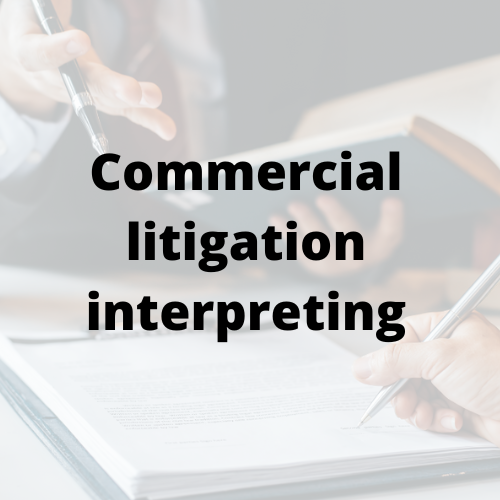3 reasons not to certify another translator’s work in the UK
When we certify a translation we take oath to declare and affirm that the document is a true and accurate version of the document in the target language. Here’s some food for thought in case you want to certify a colleague's work or would like to outsource:
Your certification will have to include your details and the original translator’s
You are not allowed to simply get the document from your client, proofread and revise it and then say it is an accurate version of the original in the target language. The statutory declaration, also known as certification or certificate of translation, needs to include the name of the person who completed the work and their details.
Another problem if you want to certify work translated by someone else is plagiarism, which may give rise to fraud or misrepresentation, which are offences. And I will go beyond: please consider the possibility that the person who has shared that document with your client might have plagiarised it themself, so certifying it may result in a further issue.
We also have issues concerning privacy. I myself would not take responsibility for a document someone else may have tempered with in ways that may result in a breach of UK GDRP laws. I have witnessed and heard of a plethora of situations where non-professional translators have used Google Translate to speed up the translation process of confidential documents, which could result in an offence.
Proofreading and editing may require extra work
Nine times out of ten, when a translated copy has been provided to me, the quality has been below standard. The few times I agreed to proofread and revise, it took me longer than just do it myself. It has often been the case of Google/Deepl translated pdf documents or something a person who spoke the two languages relatively well felt equipped to do. Sometimes I feel clients go for as cheap as possible until they realise they need a qualified person who is prepared to take responsibility.
Despite of that, even when quality is acceptable, with standardised documents like register office certificates, or anything similar to what you have translated before, it ends up taking longer than just using one of your own samples or your TMs, as you have to format, compare and type out content. Plus, it is quite difficult to be sure about how long exactly it will take you to revise someone else’s work.
Additionally, there is time and costs involved in printing, stamping, a scanning postig the final version of your document. In other words, certifying a translation is very different from what notaries and solicitors do. It takes much more work and further resources. It is time-consuming.
Not the British way
If you are not with me after my two last arguments, here’s a third, more compelling one: that is not the British way. The practice is not mentioned or recommended by any British professional association If you send a certified translation where the performer is an individual and another person who is not a business takes the oath, it will differ from what is usual. And that is an issue. Why? Well, for starters, the UK is very traditional. But also, being a Common Law country, what you should do is often the result of what is commonly done, and a different interpretation of a statute or unwritten rule is likely to be rejected. That is to say: in the event of your statutory declaration being turned down, I bid you good luck convincing whoever refuses your document that it’s perfectly fine to have one person as the translator and another person as the certifier.









